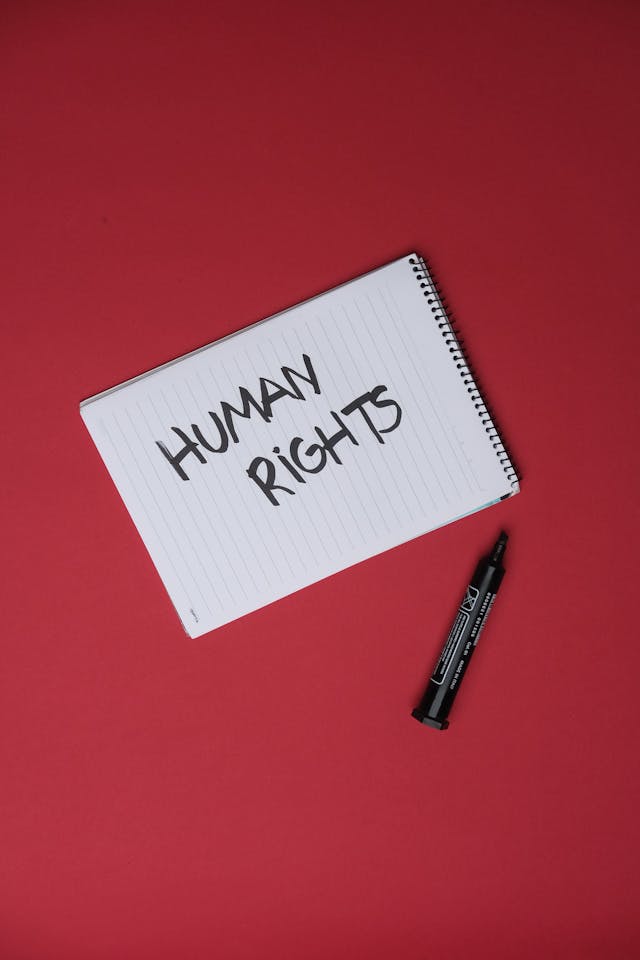Introduction
Human Rights in Humanitarian Response is a cornerstone of effective and ethical humanitarian action. In crisis situations—whether caused by armed conflict, natural disasters, or human-made emergencies—human rights considerations must guide the actions of humanitarian organizations, governments, and international bodies. Human rights provide the framework for ensuring that individuals, especially the most vulnerable, are treated with dignity and respect during emergencies, and that their fundamental rights are upheld in the face of crisis.
This course is designed for humanitarian workers, policy makers, field coordinators, legal advisors, and program managers who are involved in humanitarian response. Participants will gain an in-depth understanding of how to integrate human rights principles into humanitarian programming and operations. They will also learn how to address the challenges of protecting human rights in complex emergency settings while ensuring that humanitarian efforts are consistent with international human rights law and humanitarian law.

What Are Human Rights in Humanitarian Response?
Human rights in humanitarian response refer to the protection and promotion of the fundamental rights of individuals and communities affected by crises. These rights, as defined by international human rights law, include:
- The right to life, liberty, and security
- The right to shelter, food, and clean water
- The right to health and education
- Protection from violence, exploitation, and discrimination
In humanitarian settings, human rights ensure that affected populations are treated with respect and dignity, that their needs are met without discrimination, and that they have access to justice and redress for violations. Humanitarian responses must not only address immediate survival needs but also consider the longer-term protection of rights and the restoration of individuals’ dignity.
Course Objectives
By the end of this course, participants will:
- Understand the key international human rights frameworks that apply to humanitarian contexts.
- Learn how to integrate human rights principles into humanitarian response programs, policies, and actions.
- Develop skills to identify human rights violations and ensure accountability in humanitarian settings.
- Understand the relationship between humanitarian law and human rights law in emergency situations.
- Learn how to advocate for the rights of vulnerable populations and hold actors accountable to their obligations.
- Explore the challenges and best practices in implementing human rights in conflict zones and disaster-stricken areas.
Why Human Rights Matter in Humanitarian Response
Upholding Dignity and Respect
Human rights are central to ensuring that humanitarian action is rooted in respect for human dignity. In times of crisis, individuals can lose their homes, loved ones, and access to basic services. Protecting human rights ensures that affected populations are treated with respect, that their voices are heard, and that their needs are met in a manner that promotes their autonomy and well-being.
Preventing Abuse and Exploitation
In conflict or disaster scenarios, individuals—especially women, children, and marginalized groups—are at heightened risk of abuse, exploitation, and discrimination. Human rights frameworks provide mechanisms for preventing gender-based violence, human trafficking, child labor, and other forms of exploitation that are common in humanitarian emergencies.
Strengthening Accountability
Human rights principles hold governments, humanitarian organizations, and armed groups accountable for their actions. This course teaches how to ensure that humanitarian actors adhere to their obligations, follow international law, and respect the rights of affected populations. Monitoring mechanisms and accountability systems are key to ensuring that humanitarian efforts are not only effective but also ethical.
Supporting Long-Term Peace and Justice
Human rights are not only important in the short term but also for long-term peace and recovery. The protection of human rights during emergencies helps build trust between affected communities and humanitarian responders, laying the foundation for post-crisis recovery, justice, and reconciliation. Human rights approaches encourage the sustainability and self-reliance of communities after crises.
Core Principles of Human Rights in Humanitarian Response
1. Non-Discrimination and Equality
A fundamental human rights principle is that all people, regardless of race, gender, ethnicity, religion, or other status, should be treated equally and without discrimination. In humanitarian response, this means that services, assistance, and protection must be provided based on needs rather than status, and that marginalized or vulnerable groups should not be excluded.
2. Accountability and Rule of Law
Humanitarian responses must be guided by accountability, ensuring that all actors comply with international humanitarian law (IHL), human rights law, and other legal frameworks. Participants will learn how to ensure that humanitarian programs and policies respect the rule of law and include mechanisms for monitoring and addressing violations.
3. Participation and Empowerment
The right of affected individuals and communities to participate in decision-making processes is a core human rights principle. Humanitarian programs should not be imposed from the outside but should empower communities to engage in the response and recovery process. This includes consultation, community-based approaches, and participatory planning.
4. Right to Access Services and Protection
Access to life-saving services, such as food, water, shelter, healthcare, and education, is a fundamental human right. In emergencies, humanitarian actors must ensure equitable access to services and protect individuals from violence, exploitation, and harm. This principle requires addressing both physical access (e.g., to refugee camps, medical facilities) and barriers (e.g., cultural, financial, or legal).
5. Do No Harm
Humanitarian interventions should be designed to avoid causing harm to individuals or communities, whether intentionally or unintentionally. This principle is especially important when responding to conflict or sensitive situations, where actions taken in the name of humanitarian assistance can have unintended consequences, such as escalating violence or creating dependency.
You may also be interested in other courses in the Humanitarian and International Development
Integrating Human Rights into Humanitarian Programs
Human Rights-Based Programming
Humanitarian organizations can integrate human rights into their work by adopting a human rights-based approach (HRBA) to programming. This approach ensures that all interventions are designed with a focus on empowerment, participation, and accountability. Participants will learn how to:
- Assess needs from a human rights perspective and ensure that programs address underlying rights violations.
- Design inclusive programs that prioritize the rights of marginalized groups.
- Use human rights indicators to measure the effectiveness and fairness of interventions.

Challenges in Managing Aid Worker Safety
Human Rights Monitoring and Advocacy
Effective humanitarian responses involve monitoring human rights abuses and advocating for the protection of affected populations. Participants will explore tools and strategies for:
- Human rights reporting and documentation of abuses during crises.
- Working with international bodies (e.g., UN Human Rights Council, Office of the High Commissioner for Human Rights) to raise awareness and address violations.
- Engaging with local communities, governments, and other humanitarian actors to advocate for policy change and resource allocation.
Protection and Legal Aid
Human rights protection often involves legal aid and advocacy to ensure that individuals and communities can claim their rights and seek justice for violations. Participants will gain skills in:
- Providing legal assistance to vulnerable populations, including refugees, women, children, and minorities.
- Supporting legal frameworks to uphold rights in crisis settings.
- Collaborating with international tribunals and human rights organizations to seek justice for violations during emergencies.
Who Should Attend
This course is ideal for:

- Humanitarian workers and field staff involved in response, recovery, and advocacy efforts.
- Legal advisors and policy makers in NGOs, UN agencies, and governments.
- Program managers and coordinators working on protection, health, food security, and shelter.
- Social workers, psychologists, and mental health professionals in crisis settings.
- Advocacy officers and human rights defenders.
Methodology
The course uses a blend of theoretical knowledge, practical skills, and case-based learning to enhance understanding:
- Expert-led sessions with international human rights and humanitarian law experts.
- Interactive case studies and role-playing exercises to apply human rights principles.
- Group discussions on the challenges of implementing human rights-based programming in humanitarian settings.
- Real-world scenarios and workshops to develop practical responses to human rights challenges.
Outcome for the Course Sponsor
By sponsoring this course, your organization will demonstrate a strong commitment to the promotion and protection of human rights in humanitarian action. Sponsors will benefit by:
- Strengthening their capacity to deliver human rights-based humanitarian programs.
- Increasing the effectiveness of interventions by ensuring they are both human rights-compliant and culturally sensitive.
- Building partnerships with other organizations working in human rights and humanitarian law.









